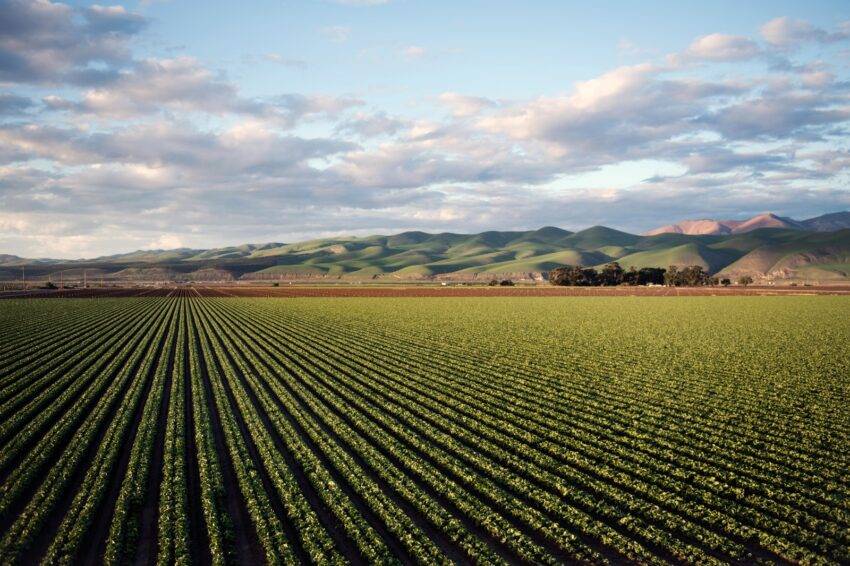2023 was without doubt the year of artificial intelligence. AI rapidly went from the fringes to the mainstream – at least for the everyday consumer – thanks to the proliferation of large language models behind platforms such as ChatGPT.
Away from the public eye though, development and deployment of AI has been accelerating at warp speed for years. And you might be surprised to hear that this is particularly the case in agriculture.
As the world’s oldest occupation, agriculture is an industry that sparks perceptions of old-fashioned rural methods and time-honored traditions. An experienced grape farmer myself, I acknowledge there is some truth to this. But agriculture is also an industry that has long known how to adapt – to consumer demand, to soil and weather conditions, to fluctuating financial markets, and yes, to technological change too.
Agriculture is one of the world’s most complicated and unpredictable markets. These uncertainties are disproportionately amplified by climate change. I would argue that no one is more aware of the immediate and damaging effects of climate change – from drought to extreme flooding, mass deforestation and biodiversity loss – than the farmer. The global need to explore and embrace new and sustainable ways of farming is abundantly clear. This is where AI-powered data analytics are stepping in.
I joined CERES Imaging 2 years ago, bringing together a lifelong passion for farming with an established career in data and analytics across the financial services sector. What our technology can do for farmers is a game-changer.
We use a combination of aerial imaging and sensors, underpinned by a proprietary database of 12 billion plant-level measurements captured across 32 million acres and more than 40 key crop types. This means we can analyze to a precise degree key crop characteristics such as nutrient levels, transpiration, chlorophyll, and water stress. Our analytics give farmers precise data, including near-real-time information on field health conditions and instant recommendations on per-plant interventions to protect yield (and, ultimately, profitability).
The results are profound. Where CERES’ technology is deployed, we consistently see between an 8% and 12% increase in yield, at the same time as a reduction in use of water, fertilizer, and pesticides. The positive knock-on effects of such efficiencies are huge, both for the farmer themselves but also for their insurers, landowners, and – critically – for the environment. With such precise measurements of soil health and water use, our data is tailored to verify and drive sustainable farming practices at a global scale.
We’re not sitting still though. We believe the entire agricultural ecosystem can be streamlined with AI-powered data analytics. That is why earlier this month we launched Portfolio Insights, a platform that works not only for growers but for all those with a stake in agriculture – investors, lenders, landowners, and crop insurers alike. The platform brings together the entirety of their farming portfolio data in one place, enabling better and faster decisions across the value chain.
Accurate damage assessment is one example of how this technology can be applied. When a major hailstorm rolled through Minnesota last year, our platform was used to quickly and precisely measure the impact of the hail damage. It provided detailed sampling plans that accurately reflected the effects on crop condition and health across hundreds of acres. And it gave the farmer’s insurer a clear picture to assess and act on an eventual claim.
Pre-empting irrigation issues is another example of what AI-powered technology can do for farmers – and is what led to CERES receiving the Zayed Sustainability Prize in 2020, the UAE’s global pioneering award for sustainability and humanitarianism. The average grower will experience up to 200 irrigation issues over the course of a growing season. While in the past they had to send workers out to try to catch these issues, our technology detects issues before they are visually apparent and before they impact yield.
Every farmer knows that the refinement of the Haber-Bosch process was arguably the most important technological revolution of the 20th century for agriculture. I believe that AI is the 21st century equivalent, not least because it is revolutionizing the entire agricultural value chain, from farmer to buyer, and equipment manufacturer to insurer. Moreover, it is embedding sustainability across farming practice by reducing water waste, cutting down on fertilizers and pesticides, and restoring soil health.
Building a sustainable agriculture system that works for farmers and consumers is critical to everyone on planet Earth. This is AI’s latest revolution, and we will all benefit from it.
By Ramsey Masri, CEO of CERES Imaging


